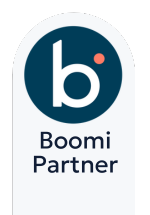Enterprises increasingly rely on cloud computing infrastructures and services to support their operations. However, the adoption of multiple cloud services often results in “siloed” business operations characterized by fragmentation, poor automation, and limited intelligence. This scenario poses significant challenges, including data discrepancies, errors, and unnecessary expenses. To tackle these challenges, organizations are increasingly adopting Integration Platform as a Service (iPaaS) solutions.
iPaaS empowers enterprises to seamlessly integrate diverse cloud applications, streamline workflows, and establish standardized integration protocols. This, in turn, simplifies the automation of business processes and facilitates the smooth sharing of data across various applications.
In this blog post, we will delve into the Common Integration Challenges on iPaaS commonly encountered during iPaaS deployment and offer actionable solutions and best practices to overcome them effectively.

Heterogeneity of Data Models and APIs
One of the primary Common Integration Challenges on iPaaS faced by organizations is dealing with the heterogeneity of data models and APIs. Even when using standards-based protocols, ensuring that data can be seamlessly shared and utilized across applications is no small feat. For example, the Open Data Protocol (OData) standard offers a way for applications to access data from multiple sources via a single interface, but it cannot guarantee data consistency.
Solution: Define Common Data Models and APIs
To address this Common Integration Challenge on iPaaS, start by defining common data models and APIs that all systems can use when communicating with each other. This approach streamlines data integration and ensures that each system understands what data it requires from another system. It simplifies user interactions as they only need to learn one set of data models, promoting efficient integration.
Data Model Mapping
Once common data models are defined, mapping individual systems’ data models to the common models becomes crucial. Misaligned data models can lead to integration issues, as different systems may represent information differently.
Solution: Ensure Accurate Data Model Mapping
To solve this Common Integration Challenge on iPaaS, rigorously map data models to the common standard. This process helps maintain data consistency and ensures that software developers can accurately integrate systems. It also reduces the learning curve for users, allowing them to focus on business needs rather than grappling with disparate data representations.
Implementing the Right Connectors
Effective iPaaS deployment requires the use of connectors that facilitate seamless communication between cloud applications and data sources. These connectors bridge the gap between different cloud applications, enabling data and service integration.
Solution: Choose and Implement Appropriate Connectors
Select and implement the right connectors for your iPaaS solution. These connectors can be standalone components or libraries that developers use to connect their applications with other cloud services, databases, or external tools. Carefully consider your integration needs and ensure that the chosen connectors are compatible with the systems you intend to integrate.
Addressing Different Cloud Environments and Models
Enterprises often operate in diverse cloud environments, including public, private, and hybrid clouds. Each environment has its advantages and disadvantages in terms of speed, scalability, reliability, and cost.
Solution: Strike a Balance Across Cloud Environments
When integrating systems in various cloud environments, it’s essential to strike a balance between different requirements. Understand that compromises may be necessary to create a unified view of these environments through the iPaaS platform. Assess your organization’s specific needs and prioritize factors such as speed, scalability, and reliability when making integration decisions.
Ensuring Smart Security Mechanisms
Cybersecurity is a top concern for organizations today. Ensuring the security of both applications and user data in an integrated iPaaS environment is a critical Common Integration Challenge on iPaaS.
Solution: Implement Robust Security Measures
To address this Common Integration Challenge on iPaaS, focus on implementing robust security measures that protect applications and user data. Ensure that only authorized requests can access data and services within the integrated iPaaS infrastructure. However, keep in mind that different cloud applications and services may have diverse security profiles. Finding ways to harmonize these profiles while maintaining strong cybersecurity is crucial.
Best Practices for Successful iPaaS Deployment:
Now, let’s delve into some best practices that can help organizations successfully navigate their iPaaS journey:
Start with the Business Goal in Mind:
- Prioritize aligning integration requirements with your business goals.
- Focus on compatibility between vendors and services to achieve your desired outcomes.
Define Common Data Models and APIs:
- Establish common data models that all systems can use for communication.
- Simplify data integration and reduce the learning curve for users.
Data Model Mapping:
- Ensure accurate mapping of data models to the common standard.
- Maintain data consistency and support seamless integration.
Implementing the Right Connectors:
- Choose connectors that align with your integration needs.
- Facilitate seamless communication between cloud applications and data sources.
Pay Adequate Emphasis on Security Integration:
- Prioritize security measures to protect applications and user data.
- Align with industry standards like GDPR or HIPAA for compliance.
Conclusion
Overcoming Common Integration Challenges on iPaaS is essential for enterprises seeking to optimize their cloud-based operations. By defining common data models, accurately mapping data models, implementing the right connectors, addressing different cloud environments, and ensuring robust security mechanisms, organizations can navigate the complexities of iPaaS deployment.
Remember to start with your business goals in mind and seek technical solutions that align with your specific needs. iPaaS can transform your integration processes, streamline operations, and enhance business efficiency when executed with careful planning and adherence to best practices.
RESKOM offers expert guidance and implementation of iPaaS solutions, ensuring seamless integration for enterprises. With a focus on aligning technical solutions with business goals, RESKOM helps organizations overcome Common Integration Challenges on iPaaS effectively. Partner with RESKOM for streamlined, efficient, and secure cloud integration solutions tailored to your unique needs.


